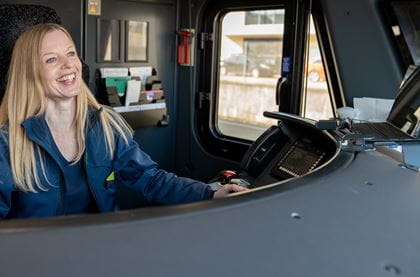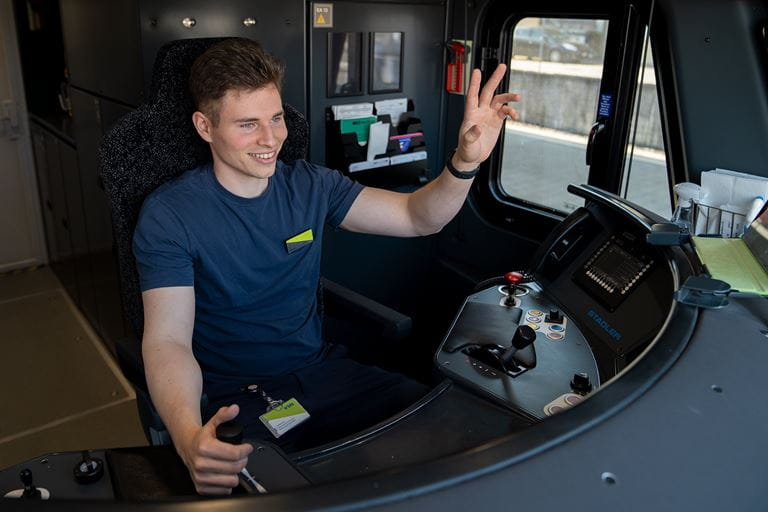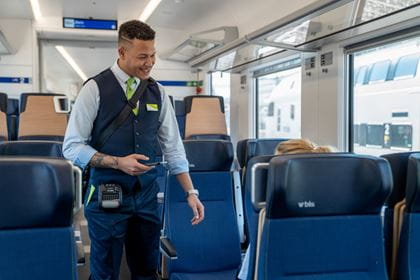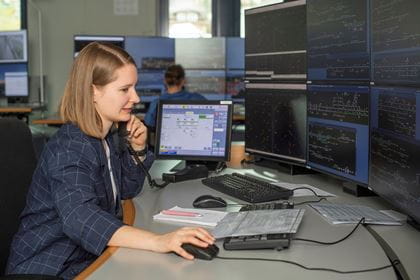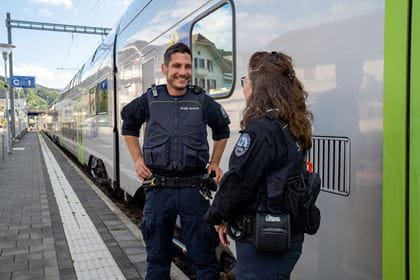Age verification
Train driver
Become a train driver with BLS now – start your further training
As a train driver, you take people in your region safely to their destination. You take commuters to and from work, connect families and transport children to school. You ensure that senior citizens remain mobile into old age and show tourists the beauty of our country. In as environmentally friendly a way as possible, 365 days a year. You are our figurehead and represent us to our passengers with pride, joy and conviction.
How you can impress us
You are an independent and responsible person and:
- have completed an apprenticeship lasting at least 3 years (EFZ) or attained a school leaving certificate (or relevant equivalent level of recognition)
- are in good health and have good eyesight and hearing
- have German (C1), French (A1) and Italian (A1) language skills, accepted certificates: DELF/DELP, Celi, TELC or SPEEXX CEFR
- hold a category B driver's licence for road vehicles
- are willing to work irregular hours, including weekends
- are highly motivated
And if you are already at home in the driver's cab, then your B100 or higher train driver's licence (narrow gauge or standard gauge with a valid supplementary sheet) is your entry ticket. Discover vacancies now: bls.ch/jobs
How we can impress you
You can also develop and progress in passenger traffic. Do you enjoy passing on your knowledge? Great! We need motivated practical trainers. Are you known for your organisational skills? Then you'll be welcomed with open arms in the scheduling team. Or would you like to manage staff? Then become one of our 16 team leaders for locomotive personnel.
Training & salary
The modular training programme lasts 12–18 months depending on the module and takes place on a full-time basis. An intensive time in which you learn the theory and practice of this responsible job. In the process, you'll also use e-learning modules, be prepared for real-life situations by professionals and will soon be involved in the day-to-day operations on the railway. Your practical trainer will support you.𠊍uring full-time training, you will receive a gross training salary of CHF 3,646 per month / CHF 47,400 per year. BLS also bears all of the training costs amounting to CHF 120,000. The rules stipulate that, in return, you commit yourself to working as a train driver for BLS for four years. We guarantee you a safe workplace in the BLS driver's cab.
After successful training, the annual salary is at least CHF 64,000 (for a full-time position), including a 13th month's salary and planned salary development. You'll reach the maximum salary of CHF 109,546 at the age of 40 and after six years of service as a train driver.
Employment package
After successfully completing your training, you can benefit from attractive employment conditions. Here are just a few of the advantages:
- The target annual working time is 2,050 hours, which averages out at 41 hours per week (for a full-time position).
- Part-time work is possible at any time after completing your training (you are entitled to reduce your working hours by a maximum of 20 percent).
- Entitlement to purchase 5 or 10 additional vacation days per year.
- Maternity leave: 18 weeks on full pay and entitlement to an extension of up to 6 months as unpaid leave; paternity leave: 10 days on full pay.
- Attractive childcare allowances (minimum rates: 373 Swiss francs per month for the first child eligible for the allowance and 241 Swiss francs per month for each additional child).
- Allowances in addition to salary: Flat-rate expense allowance for meals away from home of CHF 19 per day, night allowance of CHF 6.40 per hour, public holiday/Sunday allowance of CHF 14 per hour.
- Free 2nd class travel pass and generous discounts for the whole family, international travel discounts and free tickets for connections abroad from the second year of employment.
You can find all the benefits for you here.
Your next steps
Unfortunately, you are a little too late for the 2026 course. We recommend subscribing to the job newsletter so that you will be automatically informed when a new course is advertised. A new course is expected to start in 2027. We look forward to hearing from you!
Your training as a train driver
Train driver at BLS: a good choice
This is what your future coworkers say:
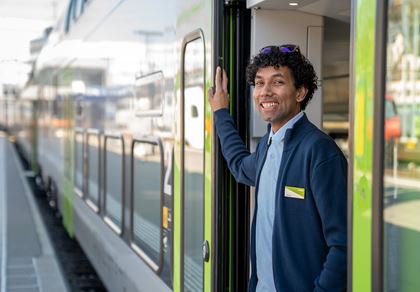
Jivisangar, Locomotive personnel
I really value my job because no two days are the same. Working with large vehicles was my dream even as a child. Today it is my everyday life, and I take many people safely to their destination every day.
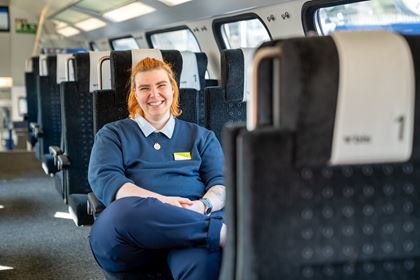
Orion, Locomotive personnel
My seat is now reserved right at the front: instead of a stressful commute, I enjoy the best views. The advance shift schedules also allow me to achieve a good work-life balance.
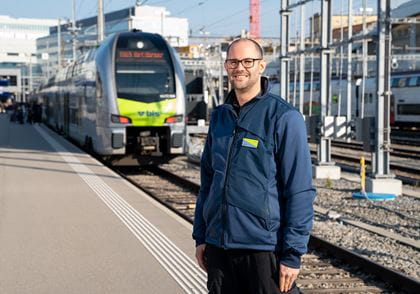
Marcel, Locomotive personnel
I can work independently at BLS and rely on my strong team. I particularly value our uncomplicated and respectful interaction with each other.
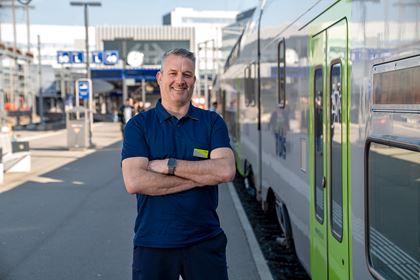
Niklaus, Locomotive personnel & practical trainers
Being a train driver has been my passion and my profession for over 20 years. As a practical trainer, I have the opportunity to pass on my knowledge and support new colleagues on their journey.
Into the heart of the action
Our train drivers take you into the heart of the action – experience first-hand what their day-to-day work involves.
It's invaluable to get information about the training, job and employment conditions. What's even more exciting is going to our colleagues in the driver's cab and asking them directly. What is it like to work for BLS? Findout and contact us.
Are you already a train driver?
Join us and become part of our strong team.
